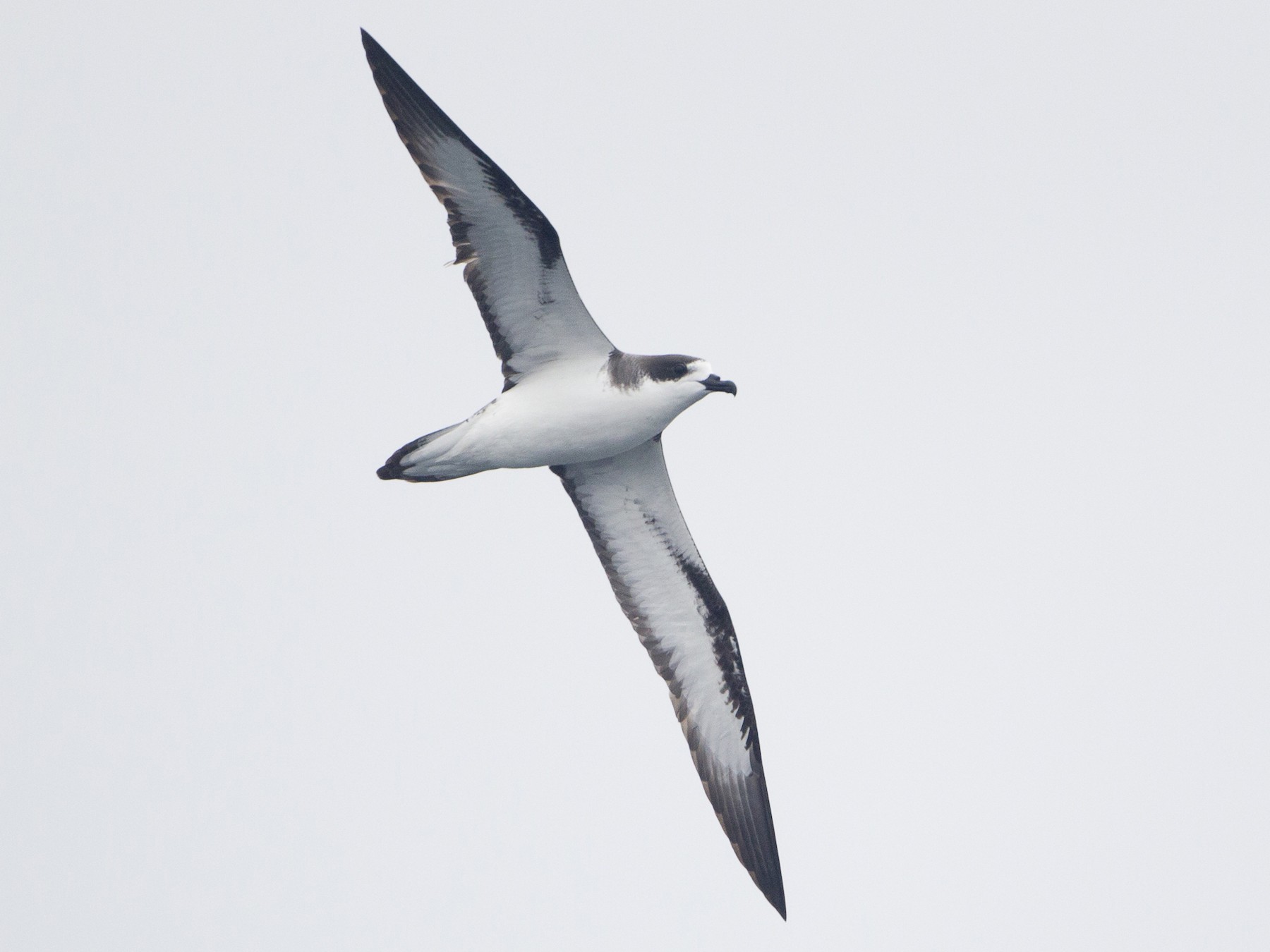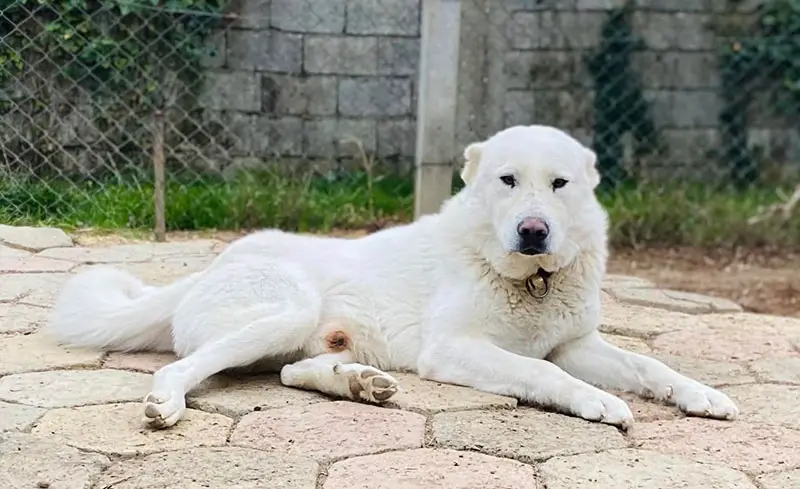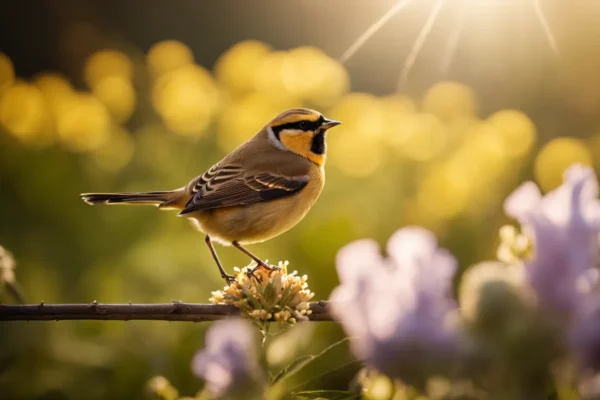Kauai is home to a wide variety of birds, some of which are only found on this island. It’s a fantastic place for birdwatching because you can see both birds that live on land and those that come from the sea.
In this blog, we’ll explore some of these birds, each with its own unique characteristics. These feathered creatures not only add beauty to Kauai’s landscape but also give us valuable insights into the island’s environment and ecosystem. So, let’s dive into the world of Kauai’s birds and discover the wonders they bring to this island paradise.
List of 20 Beautiful Birds of Kauai
Zebra Dove

- Scientific name: Geopelia striata
- Lifespan: Typically 3-5 years
- Size: Small dove; around 7-8 inches (18-20 cm) in length
- Origin: Native to Southeast Asia and parts of the Pacific Islands, often found in open habitats.
The Zebra Dove flaunts a grayish-brown hue with dark barring on its upper body, while the underparts display a pinkish tone with dark bars. One can also notice the bluish skin on its face. Immature birds have a more subdued appearance, with pink feet.
These doves are commonly found in open areas near human settlements, where they nourish themselves on seeds, fruits, and insects. Monogamous by nature, Zebra Doves display remarkable parenting, as both parents care for their offspring. Nevertheless, in certain regions, they are considered agricultural pests due to crop damage.
The breeding season of Zebra Doves spans from September to June, during which males perform an enchanting mating dance to attract their desired partner. Once the pair is formed, they collaborate in building a nest, where the female lays 1-2 eggs that incubate for approximately three weeks.
Northern cardinals

Image Source
- Scientific name: Cardinalis cardinalis
- Life span: Up to 15 years
- Size: 21 cm (8.3 in)
- Weight: 33-65 g
- Origin: Eastern and Central North America
Northern Cardinal is yet another introduced bird species in Kauai, adorning the island with its distinctive plumage. This medium-sized songbird measures around 7.9 inches in length and belongs to the Cardinalidae family.
Recognizable by its bright red body and black face mask, the male Northern Cardinal stands out in its vibrant colors, while the female displays a mostly brown appearance with hints of red on the wings. Both genders possess red bills.
Adaptable in nature, the Northern Cardinal thrives in diverse habitats, ranging from forests and swamps to urban areas. These striking birds are known to visit backyards when enticed by sunflower seeds. Their songs manifest as pleasing whistles lasting 2-3 seconds, while their calls are a series of metallic notes.
Red-Footed Booby:

Image Source
- Scientific name: Sula sula
- Lifespan: 15-20 years
- Size: 70-85 centimeters (28-33 inches)
- Origin: Tropical and subtropical regions worldwide
Red-Footed Booby shares its family, Sulidae, with the more popular Blue-Footed Booby. These seabirds are known for their remarkable aerial displays and belong to the large-sized category, boasting an impressive wingspan of up to 59 inches and a body length ranging from 27 to 31.2 inches.
Juvenile Red-Footed Boobies display a brownish hue overall, complemented by their distinctive pink feet. As they mature, they undergo a transformation into one of two distinctive plumage variations. The adults can either sport an elegant white body with black wings and tail, paired with striking red feet, or exhibit a more subdued dark brown body with a tan head, also adorned with red feet. Both morphs feature a captivating blue face and a robust bill.
As the name suggests, these birds are recognized by their vivid red feet, which set them apart in the avian world. Red-Footed Boobies showcase impressive aerial acrobatics, often observed diving gracefully into the water to catch fish. When it comes to nesting, they demonstrate versatility, building their nests either on the ground or in trees and laying one or two eggs per brood.
Hawaiian Goose

- Scientific name: Branta sandvicensis
- Lifespan: About 10-25 years
- Size: Medium-sized goose; approximately 20-25 inches (51-64 cm) in length
- Origin: Endemic to the Hawaiian Islands, often found in grasslands and wetlands.
The Hawaiian Goose, more affectionately known as the Nene, holds the esteemed title of being the official state bird of Hawaii. As an endemic species, it proudly inhabits all the main islands, including Kauai.
This unique bird, belonging to the genus Branta, possesses striking characteristics. With a length measuring 25 to 30 inches and a weight of 4 to 6 pounds, the Nene exhibits sexual dimorphism, with male birds being larger than their female counterparts. It boasts a long neck, a small head, and relatively short wings. Its plumage predominantly displays shades of gray-brown, with distinctive black barring on the wings and tail, while the breast and belly showcase a pristine white hue. A black head and a black bill complement its appearance, with the legs appearing grayish-black. Notably, diagonal markings grace its neck, adding to its allure.
The Nene sustains itself on a herbivorous diet, feasting on berries, grasses, flowers, and leaves. Its habitat includes open grasslands, shrublands, lava flows, and agricultural areas. The breeding season extends from August to April, with an incubation period of about a month.
Red-crested Cardinal

Image Source
- Scientific name: Paroaria coronata
- Lifespan: Up to 10 years
- Size: Approximately 17-20 centimeters (6.7-7.9 inches)
- Origin: South America (native to Argentina, Bolivia, Brazil, and Paraguay)
The vibrant Red-Crested Cardinal graces the Hawaiian islands with its beauty, thriving in abundant numbers across its range. To identify these charming birds, observe their gray upperparts, contrasting red head, and white underparts. Their striking name originates from the beautiful crest atop their heads. They measure around 7.5 inches in length, boasting short bills and dark gray legs, while juvenile birds exhibit a brownish head.
Interestingly, the Red-Crested Cardinal is not a native species to the island; it was introduced in the 1900s. Belonging to the tanager family, these birds mainly feed on seeds, berries, and insects, exhibiting a preference for marshes and rivers. They display a sociable nature, often seen in pairs or small groups, and their songs resonate as melodic wonders.
Pacific Golden Plover

- Scientific name: Pluvialis fulva
- Lifespan: Typically 5-7 years
- Size: Medium-sized shorebird; around 8-11 inches (20-28 cm) in length
- Origin: Found in the Arctic tundra during breeding season and migrates to coastal areas of the Pacific Islands during the non-breeding season.
Pacific Golden Plover is a fascinating bird species found on Kauai, known for its intriguing migration habits. These birds typically migrate in late April or early May and depart in late September or early October. During their stay, they can be observed on the beaches, in fields, and even in the dunes.
Distinguished by its striking appearance, the Pacific Golden Plover is considered one of the most beautiful shorebirds globally. With a length of about 9 inches and a wingspan of approximately 24 inches, it showcases black underparts and faces, while its upperparts boast a captivating blend of black, white, and gold. The females are easily distinguishable with their brown and white faces.
When on Kauai, these plovers are often spotted foraging for earthworms, cutworms, grasshoppers, leeches, and spiders. During the nesting season, they lay up to four splotched eggs, and the fledglings leave the nest after approximately four weeks. Their vocalizations consist of a series of “chu-it” and “chu-wee” notes.
Rose-Ringed Parakeet

- Scientific name: Psittacula krameri
- Lifespan: 25 to 30 years
- Size: 16 inches
- Native to: Africa and South Asia
Rose-ringed Parakeet is a small and brightly colored parrot introduced to Kauai in the 1960s. These birds measure around 16 inches in length and sport green plumage with a red beak and a distinctive rose-colored neck ring.
Living in flocks of 10 to 30 individuals, Rose-ringed Parakeets are highly social creatures. They have an omnivorous diet, enjoying a variety of fruits, seeds, and insects. Taming them is relatively easy.
Despite their vibrant presence, Rose-ringed Parakeets have become an invasive species in Kauai, causing damage to orchards and crops. Although their numbers remain stable in the wild, the local government is mindful of the impact on the ecosystem.
Hawaiian Petrel

- Scientific name: Pterodroma sandwichensis
- Lifespan: Around 30-40 years
- Size: Medium-sized petrel; approximately 16-18 inches (41-46 cm) in length
- Origin: Native to the Hawaiian Islands, often nests in highland areas and forages at sea.
Hawaiian Petrel is a unique seabird endemic to the Hawaiian Islands, including Kauai. The population of this species stands at approximately 20,000 birds, with around 5,000 breeding pairs.
To identify the Hawaiian Petrel, birdwatchers can look for a medium-sized petrel with a wingspan of about 39 inches. This long-winged bird displays mostly dark brown-gray above and white underparts.
Feeding primarily on squid and fish, the Hawaiian Petrel nests in burrows on the slopes of volcanoes in Hawaii. Regrettably, this magnificent bird is currently endangered, and measures have been implemented by the Hawaiian government to protect and preserve this essential part of the island’s avian biodiversity.
Hawaiian Coot

- Scientific name: Fulica alai
- Lifespan: Typically 3-5 years
- Size: Medium-sized waterbird; about 14-15 inches (36-38 cm) in length
- Origin: Endemic to the Hawaiian Islands, often found in freshwater wetlands.
Hawaiian Coot is a captivating medium-sized water bird that proudly calls the Hawaiian Islands its home. Also referred to as alae kea, this species is closely related to the American coot but can be easily distinguished by its striking black head and neck, adorned with a white patch on the front of its head. The remainder of its body boasts a rich black color, and its vivid red eyes add to its allure. Measuring around 13 to 16 inches in length, this unique bird graces wet habitats, including marshes and ponds, across Hawaii’s main islands.
Hawaiian coots are omnivorous creatures, feasting on a diverse menu that includes aquatic plants, small fish, insects, and crustaceans. They exhibit monogamous behavior, often forming lifelong pairs. The female takes charge of constructing a simple nest from grasses and plant materials near water, where she lays 3 to 8 eggs. Once hatched, the young coots can be seen following their parents around as they forage for food. Despite their common presence, the Hawaiian coot is classified as a vulnerable species, highlighting the need for conservation efforts.
Scaly-Breasted Munia

- Scientific name: Lonchura punctulata
- Lifespan: About 4-7 years
- Size: Small finch; around 4-5 inches (10-13 cm) in length
- Origin: Native to South and Southeast Asia, introduced to various parts of the world.
Scaly-Breasted Munia is a charming sparrow-like bird found in certain regions of Hawaii, including Kauai. This species can be easily identified by its brown upperparts, dark brown face, and white underside adorned with dark scaly markings. Both males and females display similar appearances, with males slightly larger in size. Juveniles, on the other hand, exhibit an overall brown body. They boast short triangular black bills.
Feeding on seeds and insects, the Scaly-Breasted Munia is highly gregarious, often found in large groups. During the breeding season in summer, they build cup-shaped nests from grasses and lay white eggs that are jointly incubated by both parents. Currently considered a common species, they do not face the threat of extinction.
Short-Eared Owl

Image Source
- Scientific name: Asio flammeus
- Life span: up to 10 years in the wild
- Size: length of 13-17 inches, wingspan of 33-43 inches
- Weight: 7-16 oz
- Origin: North and South America, Europe, and Asia
The Short-Eared Owl is aptly named due to its characteristic facial disks that resemble short “ears,” giving it a unique appearance. This medium-sized owl can be found in open country areas across parts of Kauai. Its black-brown plumage with heavy streaks distinguishes it on the island.
With a round head and striking yellow eyes, the Short-Eared Owl measures around 13 to 16.9 inches in length and boasts an impressive wingspan of up to 40.5 inches.
In contrast to most owls, this species is active during the day, preferring to hunt by flying low over the ground or perching on low structures while scanning for its prey. Its diet primarily consists of small mammals such as mice, voles, and rabbits.
Barred Dove

- Scientific name: Geopelia maugeus
- Lifespan: Typically 3-5 years
- Size: Small dove; approximately 7-8 inches (18-20 cm) in length
- Origin: Found in various parts of Southeast Asia and the Pacific Islands.
Barred Dove is a common and small bird species found on the island of Kauai. It shares a close relationship with Zebra Doves and can be identified by its brown-gray plumage with dark barrings, gray head adorned with an orange eye ring, long tail, and gray legs. Despite their usual shyness, they can become quite tame around humans and have a varied diet, often preferring woodland edges and farmlands as their habitats.
Scarlet honeycreeper

Image Source
- Scientific name: Iridophanes pulcherrimus
- Life span: Up to 6 years
- Size: 11 cm (4.3 in)
- Weight: 10 g
- Origin: South America
Kauai is home to several Hawaiian honeycreeper species, and one of the notable ones is the I’iwi or Scarlet Honeycreeper. These bright red birds, with their curved bill and black wings featuring a small white patch, are federally endangered. They inhabit various habitats, including rainforests and high elevations, and are popular among birdwatchers for their charming whistles and vocalizations. The Hawaiian honeycreeper family includes other endangered species like palila, akikiki, nihoa finch, and akohekohe, prompting conservation efforts to protect these precious birds.
Red-Whiskered Bulbul

- Scientific name: Pycnonotus jocosus
- Lifespan: 11 years
- Size: 17-23cm
- Native to: Southern Asia
Originally native to India, the Red-Whiskered Bulbul found its way to Hawaii as a pet in the early 1900s. Over the years, some individuals were released into the wild illegally, resulting in a growing population on Kauai and other Hawaiian islands.
The Red-Whiskered Bulbul, also known as Pycnonotus jocosus, stands out with its black head, white cheeks, black back and legs, and a distinct red patch near its eyes. These social birds often form small flocks and have an omnivorous diet, consuming insects and fruit buds. However, they are considered invasive on Kauai, frequently encroaching upon gardens and orchards with their recognizable call, the loud “kink-a-joo.” Conservation efforts are required to manage their impact on the local ecosystem.
Spotted Dove

- Scientific name: Spilopelia chinensis
- Lifespan: Around 3-5 years
- Size: Small dove; about 9-12 inches (23-30 cm) in length
- Origin: Native to South and Southeast Asia, introduced to other regions including the Pacific Islands.
Spotted Dove is a small and plump bird belonging to the dove family. These charming birds are commonly found in gardens all around Kauai. They have mainly brownish plumage with a distinctive rose-colored chest, black, white-spotted nape, and gorgeous red feet. Their dark brown wings with white edges and long tails make them easy to identify. The Spotted Dove is a widespread species across many of the major islands. Although generally shy and preferring to avoid human interaction, these birds can often be spotted in parks and gardens, seeking trees for roosting. Their diet mainly comprises seeds, but they also supplement it with insects and fruit. While they primarily forage on the ground, you may also spot them perched in trees. The breeding season varies depending on the location but typically spans from September to January. Spotted Doves build simple nests using sticks and lay two or three eggs.
Hawaiian Gallinule

- Scientific name: Gallinula galeata sandvicensis
- Lifespan: Typically 2-5 years
- Size: Medium-sized waterbird; around 13-15 inches (33-38 cm) in length
- Origin: Endemic to the Hawaiian Islands, often found in wetlands and marshes.
Hawaiian Gallinule Hawaiian common moorhen, or Hawaiian gallinule, boasts an impressive array of names on Kauai. This bird belongs to the family Rallidae. Endemic to the Hawaiian Islands, the Hawaiian Gallinule thrives in marshes and wet meadows. It’s a medium-sized bird, measuring around 12 inches in length and weighing approximately 0.77 lbs. The striking features include long yellow legs with reddish spots, a lengthy neck, and a bill tipped with yellow and red. Its plumage mainly exhibits brown-black hues adorned with white markings on the wings and tail. The eyes of this bird are dark and captivating.
This gallinule is renowned for its call, similar to that of the Hawaiian coot but louder. Its diet primarily consists of insects, while it also occasionally consumes plant material and small fish. Foraging takes place as the bird walks gracefully through wetlands, searching for food on or near the water’s surface.






